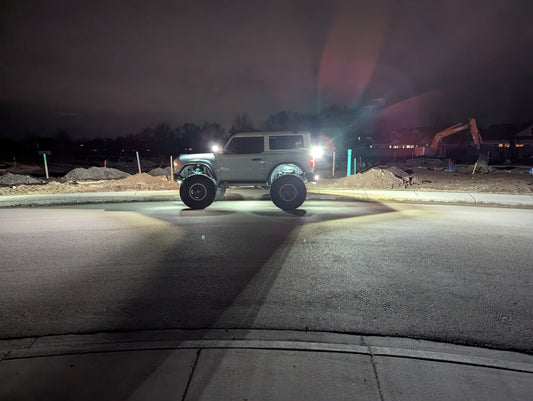Increased Power Needs
Ryan McKee
05/14/18
Though we don’t often think about it, almost everything tangible in both our homes and our vehicles draws some kind of power. From phones and tablets to two-way radios and your favorite Black Oak LED products, each additional power draw in your car has an impact on the efficiency of your alternator and battery. As you add more and more auxiliary lighting and other gear it’s important to recognize the limitations of the factory electrical system and upgrade it as needed. While there are options for some vehicles like heavy-duty alternators and bigger batteries, there’s also a growing popularity in the realm of dual-battery installations, a project that in essence adds an entirely second battery whose sole responsibility is dealing with power consumption for auxiliary equipment.
As the first portion of a two-part write-up, we’ll go over the basic equipment required for a system like this. There are a lot of options to achieve the second battery set-up on budgets of all kinds, but it’s important to not cut corners – especially when dealing with vehicle electrical systems! Here’s the basic breakdown of what you’ll need to get started with a dual-battery project:

House Battery – Industry nickname for the second battery, which will handle the auxiliary electrical system. In a basic dual-battery system we recommend a deep-cycle AGM battery, 100Ah (amp hour) or higher. Amp hours denote how much power the battery can provide over a 20-hour period, so you’ll need to do some math to figure out how much power your gear draws in order to determine the correct Ah battery for your setup.
Battery Solenoid – The part responsible for separating the power between the starting battery and the house battery. When the vehicle is turned off and the system voltage drops, the solenoid automatically disconnects the two batteries so that the house doesn’t drain the starting battery by continuing to draw voltage. Amperages for solenoids range from 60 amps to over 150 amps. There are cheaper, simple versions as well as intelligent versions that monitor the system and control voltage flow, the latter of which are a better fit for newer vehicles with more complex electrical systems.
Fuses – You’ll need two, the first put in-line between the starting battery and solenoid, and the second between the solenoid and new house battery. These are responsible for cutting off voltage flow in the event of a spike, and work towards preventing damage to your equipment and lowering the chance of a vehicle fire. Be sure to select the appropriate voltage for your solenoid.
Electrical Wire – Depending on your installation location, you’ll need the appropriate length to run from the starting battery to the house battery. Use an online chart to determine the appropriate wire gauge for the length of run and amperage of your solenoid/fuses, typically being 2 or 4 AWG for up to 150 amps.
Connectors – In order to customize your installation appropriately, you’ll need to buy appropriate gauge crimp-on connectors to terminate the cables at each battery, the solenoid, and both fuses.
Once you’ve got your gear ordered and delivered for a dual-battery project, it’ll be time to get things installed! Check back in a few weeks and we’ll let you know how to go about getting this system into your vehicle safely, and powering up your extra lighting and electronics without risking a the need for a jump start, or shortening the life of your starting battery.




